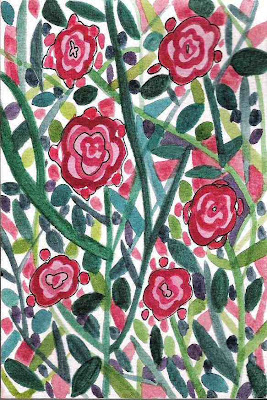
Despite all the terrible reviews I went to see Baz Luhrmann's latest film, Australia, last week. I have to say I was pleasantly surprised. Well, I suppose anything would be a pleasant surprise after reading Peter Bradshaw's scathing Guardian critique. Also, I'm not a Nicole Kidman fan, but by the end of the film I had actually warmed to her.
Yes, the film is sugary-sweet in places, but, as Philip French puts it, "you don't go to Baz Luhrmann expecting to find Patrick White, any more than you buy a ticket for South Pacific expecting to experience The Naked and the Dead." French's observation neatly sums up my own reaction to the film. Set in Australia at the brink of World War Two, this epic adventure begins rather clumsily, veering between outback wilderness to white saloon bars, to stately home, horses and lawns in England. The film is also spoiled to start with by Kidman's efforts to act the frosty upper-class Lady Sarah: her accent veers between Bridget Jones and Mary Poppins for a good half an hour. However, I was soon carried away by the adventure and hypnotised by the stunning costumes and props. Take the heroine's matching, immaculate blue and white set of suitcases - one of which explodes during a brawl, exploding its contents of delicate lingerie - or her dazzling, tight red ball gown. Everything is just that little bit camp and over the top, just like the dazzling technicolour of The Wizard of Oz, a recurring narrative and stylistic reference. It's obvious that Luhrmann is just as interested in visual details as he is in narrative. To me, both work well together in this film which is meant to be pure entertainment at its campest, exaggerated best.
Kidman's performance warms up, too (once she is able to stop acting the 'English Lady'), and she makes a great match with Hugh Jackman. Sod Russell Crowe, Jackman is far better suited to this part. Nullah, the young, mixed-race boy, and his grandfather, his Aborigine grandfather, have important roles in the film, too. They movingly portray the terrible racial prejudice inflicted on Australia's indigenous peoples, right up until the early 1970s, as the film's closing credits point out. So the film isn't all mush and escapism - it also highlights a horrible and uncomfortable truth about a not-too distant past. But go and see it for all the mush and escapism anyway - and if you have any heart you'll be swept away by the story.
Last week I was also lucky enough to catch a screening of the stunning All About Eve, starring Bette Davis at her bitchiest, cattiest and most wonderful. It's amazing how the film's themes - ambition, celebrity and the emptiness of fame - still ring true today. It also sums up that each to-his-own, cut-throat environment particular to New York.

Changeling, Clint Eastwood's latest directorial achievement, is another film set in the first half of the 20th century. I went to see it last week at the newly revamped Everyman cinema in Hampstead, as a post-Christmas treat. Tickets are extortionately priced, in exchange for the privilege of waiter service and enormous sofas instead of seats. Each place comes complete with a side table, to which champagne holders are affixed. There are even aeroplane-style buttons which remain lit up throughout the film, and can be pressed at any time , should you require additional drinks or snacks. It's a nice idea, but in practice it means a lot of clunking of bottles and general disturbance as waiters weave in and out of spectators, many of whom are concentrating too hard on munching and sipping than watching the film. Given the choice, I'd go for the BFI any day - you may not be able to eat or drink in the auditorium but the bar is very cool. Also, £12 is a ridiculous price for a cinema ticket - you can go to the theatre for cheaper.
Either way, I enjoyed the film. Angelina Jolie's performance is very convincing; the costumes and sets are stunning, and the story all the more poignant because it's true. It's interesting that Clint Eastwood seems to be quite a feminist - like Million Dollar Baby, this film highlights sexual inequality and the barriers faced by women. He has also revealed himself to be a talented musician, having composed the score for both these films and also Flags of our Fathers, Grace is Gone and Mystic River.



















































